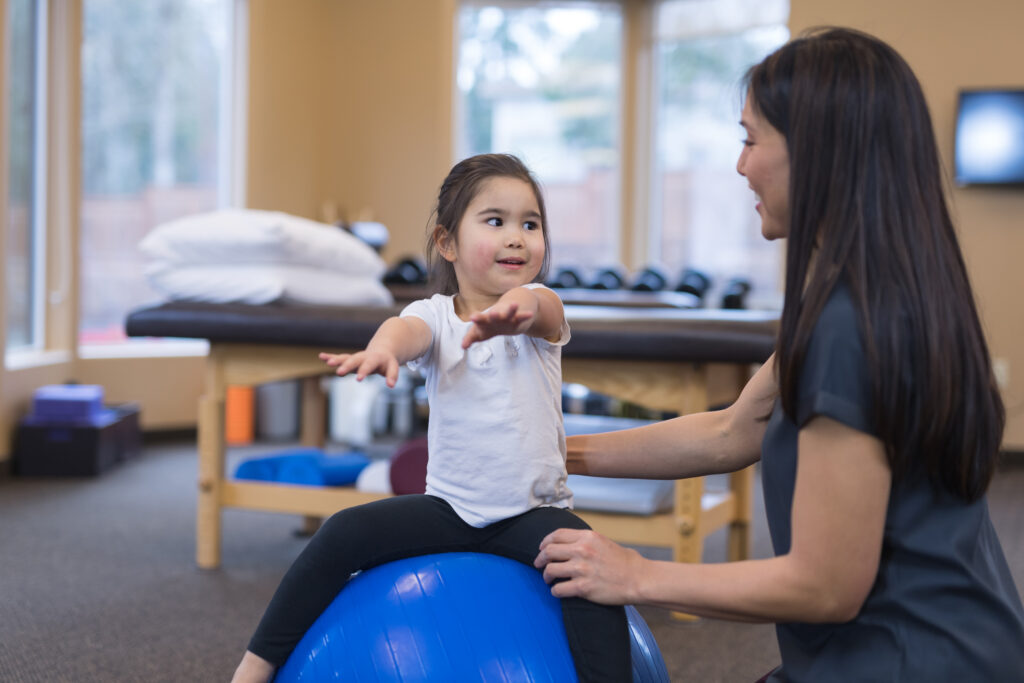
Pediatric medicine is primarily about prevention. We spend the majority of our day doing well checks to be sure our patients are growing and developing as expected. We give vaccines to prevent infectious diseases and we give anticipatory guidance on preventing injury. Regular well visits allows us to diagnosis developmental difficulties early. Early intervention with targeted therapy is key to helping these patients catch up as much as they can. Therapies available include occupational, speech, and physical therapy, along with other behavioral and educational interventions. In this post, I’m going to talk all about occupational therapy with my friend Steve Oas from the OAS Center here in San Diego.
What is Occupational Therapy?
Occupational Therapy, or OT, is a treatment modality specifically intended to help those who have impairment in their fine motor skills. Children use these skills for doing every day tasks. OT helps people learn how to do these tasks for the first time or relearn how to do them following an illness or injury. “For children, this includes activities that are a part of learning and functioning at home and at school”, says Mr. Oas. OT helps children who have any type of physical, sensory or cognitive disability learn skills like eating, getting dressed, focusing on learning, writing, and playing with toys or other kids.
What are some reasons a child might need OT?
Children are referred for occupational therapy for a variety of reasons. Toddlers may be referred due to delays in their developmental milestones including fine motor skills, gross motor skills, hand eye coordination and motor planning. School-age children may be referred by a teacher if they notice a student struggling to write legibly or use school supplies like scissors. Students may also be referred for help with organization skills or self-regulation. Additionally, Mr. Oas notes that “a child could be referred to occupational therapy for difficulties with focusing or issues with over or under sensitivity to noise, touch or movement.“
What can I expect when I take my child to OT?
While occupational therapy sessions often look like play, the therapists are well trained in teaching your child new skills. Sessions can occur in a clinic setting like the OAS center, or at school. Clinic-based and school-based therapists provide “activities that foster regulation to get your child’s mind and body in a safe and healthy zone for learning and addressing targeted goals” says Mr. Oas. Therapeutic activities might include strengthening the fingers for better handwriting, full body exercises to prepare your child to focus, or a series of ways to help your child overcome sensory issues. Theses fun and creative activities help your child meet their goals.
What is the difference between school based OT and private OT?
Schools provide OT to children who need it because of IDEA, Individuals with Disabilities Education Act. This is a federal law that provides special education services to children with disabilities at no cost to the family. Mr. Oas states that “school based occupational therapy will focus on your child’s occupation as being a student and their academic challenges. This process generally starts with a teacher, parent, or other involved person identifying a student who is struggling academically.” Services at school, including OT, must be relevant to the education of the student. If a school assessment determines a student would benefit academically from OT, the school-based therapist will provide appropriate intervention. The goal of the intervention would ultimately be to improve the academic performance and school functionality of the student. “These services may be provided directly with the child, in a small group setting, in the classroom, or as a consultation service” according to Mr. Oas. A child must have an Individualized Education Plan (IEP) in order to receive OT at school.
Clinic-based OT focuses on functional improvements for the child at home or in their community. This may include feeding issues, help with activities of daily living, help with sensory issues, or self-regulation. Your primary care doctor will make a diagnosis of a delay or disability that would benefit from OT. They then make a referral to a clinic to provide the needed services. If approved, the insurance pays for this service. Mr. Oas says, “these services emphasize a family-centered approach to care and treatment can be provided with just the client or with caregivers present.” The caregivers can learn tips and tricks to work on at home as well.
If my child’s school will not provide OT, how do I find private OT?
To learn more about your child’s legal rights and how to advocate for help via school, click here. If your child truly does not qualify for school-based services, requires additional services or has a disability that does not affect school performance, private OT is your next step. You will want to visit with your pediatrician to discuss your concerns and get a referral. Call your insurance in advance to get a list of covered clinics so you can find one that fits your needs. “Being an advocate for your child is important and expressing your concerns to the doctor is key in getting your child the help they may need,” says Mr. Oas.
Overall, OT can be a very valuable addition to early intervention or school accommodations for children with a variety of developmental delays or disabilities. However, prevention is always best. Mr. Oas recommends the same actives as pediatricians; physical play, imaginative play, and playing with toys more than watching screens. “Toys help in developing a child’s fine motor and gross motor skills as well as encourage imaginary play.”
If you think your child would benefit from OT, call your pediatrician today. Huge thank you to Steve Oas for all of his help on this post.
